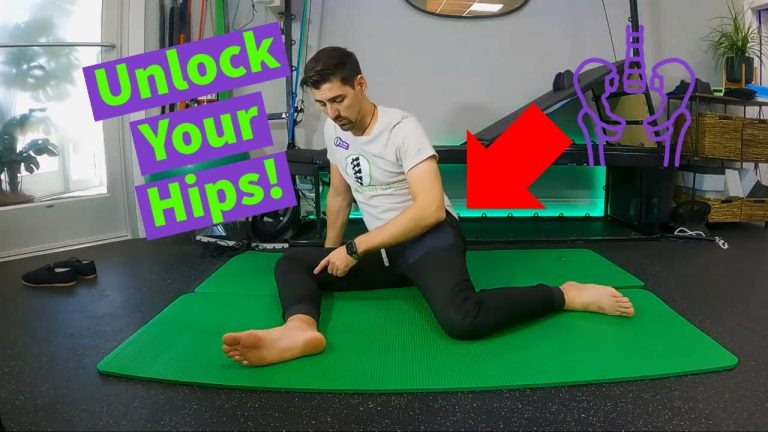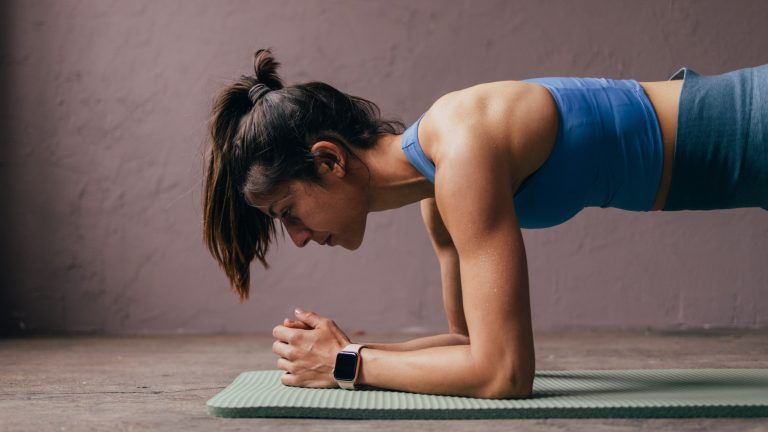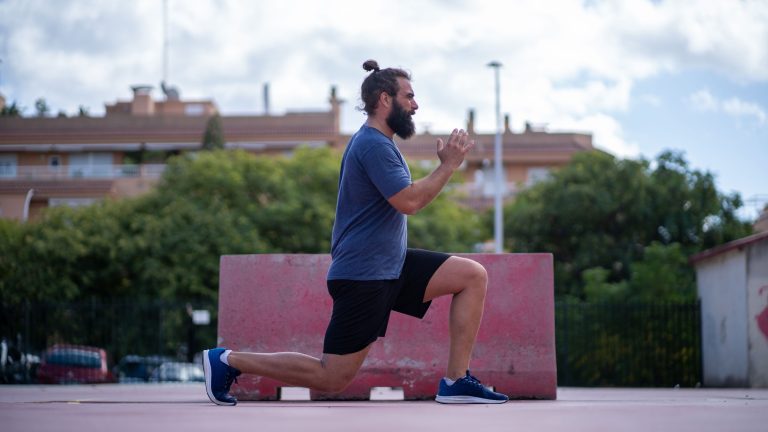Unlock Your Full Potential with Hip and Lower Back Exercises: Strengthening and Mobilizing for Optimal Health
Are you tired of dealing with nagging hip and lower back pain? Don’t worry, relief is at hand!
In this comprehensive guide, we will explore a variety of hip and lower back exercises that will not only help alleviate your discomfort but also strengthen and improve your mobility. From engaging your glutes for stronger hips to incorporating rest and ice into your routine, we have got you covered.
But that’s not all – we will also delve into the importance of warming up before stretching and the benefits of dedicating more time to your stretching routine. So grab your exercise mat and get ready to bid farewell to pain and say hello to a stronger, healthier you!
hip and lower back exercises
Hip and lower back exercises are important for strengthening the hips and minimizing pain while improving mobility. Engaging the glutes is key to strengthening the hips, and pushing the foot up toward the ceiling without tilting the pelvis can have a maximum impact.
Before attempting these exercises, it is recommended to rest and ice painful hips. Warming up muscles with light cardio, like brisk walking, before stretching is also advised.
Stretching should be done daily if possible, while strength exercises should be done 2 to 3 times a week. If hip pain becomes severe, it is important to stop exercising and consult a healthcare provider.
Simple stretches and strength exercises, such as knee-to-chest stretch, lower back rotational stretch, lower back flexibility exercise, bridge exercise, and cat stretch, can help minimize pain and improve mobility within a few weeks. It is essential to repeat each stretch 2-3 times and ideally do the full routine once in the morning and once in the evening.
To avoid injury, start with a lower number of repetitions for each exercise and gradually increase over time. If you have ongoing back pain or a back injury, it is recommended to consult a physical therapist or healthcare professional for safe exercise recommendations.
Key Points:
- Hip and lower back exercises strengthen the hips and improve mobility while minimizing pain.
- Engaging the glutes is important for strengthening the hips.
- Before attempting exercises, it is recommended to rest and ice painful hips and warm up muscles with light cardio.
- Stretching should be done daily, while strength exercises should be done 2-3 times a week.
- Simple stretches and strength exercises like knee-to-chest stretch and bridge exercise can help minimize pain and improve mobility.
- Start with a lower number of repetitions for each exercise and gradually increase over time to avoid injury.
Sources
https://www.mayoclinic.org/healthy-lifestyle/adult-health/in-depth/back-pain/art-20546859
https://www.healthline.com/health/pain-relief/exercises-for-hip-pain
https://www.youtube.com/watch?v=_lT5Cd4cDTc
https://www.livestrong.com/article/386336-exercises-to-strengthen-lower-back-and-hips/
Check this out:
💡 Pro Tips:
1. Incorporate hip abductor exercises in your routine to target the side hip muscles. This can be done by using resistance bands or performing side leg lifts.
2. Don’t neglect your core muscles when doing hip and lower back exercises. Strengthening your core can provide added support and stability to your hips and lower back.
3. Add stability ball exercises to your workout for an extra challenge. Exercises such as hip bridges or hamstring curls on a stability ball can engage your hip and lower back muscles in a different way.
4. Avoid overstretching your hip and lower back muscles. It’s important to listen to your body and only stretch to a comfortable point. Stretching too far can lead to injury or worsening of pain.
5. Consider incorporating low-impact exercises such as swimming or cycling into your routine. These exercises can provide a cardiovascular workout while being gentle on your hips and lower back.
1. Importance Of Engaging The Glutes For Hip Strengthening
Many people experience hip pain or discomfort at some point in their lives, and one important factor in maintaining healthy hips is engaging the glute muscles. The glutes, comprised of the gluteus maximus, gluteus medius, and gluteus minimus, play a vital role in stabilizing the hips and promoting proper movement.
To strengthen the hips, it is essential to focus on exercises that specifically target the glutes. One effective exercise for engaging the glutes is pushing the foot up toward the ceiling without tilting the pelvis.
This movement, known as a hip thrust or glute bridge, helps activate and strengthen the glute muscles, promoting hip stability and reducing the risk of hip pain.
2. Preparing The Hips With Rest And Ice
Before attempting any stretching or strengthening exercises for painful hips, it is crucial to provide the necessary rest and ice treatment. Resting the hips allows inflammation to subside and prevents further aggravation of the affected area.
Applying ice packs wrapped in a towel for about 15-20 minutes can help reduce pain and inflammation in the hips.
It is important to note that rest and ice should be used as a temporary solution and not as a long-term treatment. If the pain persists or worsens, it is essential to seek medical advice to determine the underlying cause and receive appropriate treatment.
3. Warming Up For Hip Stretching And Strengthening
Before engaging in any stretching or strengthening exercises for the hips, it is crucial to properly warm up the muscles. A light cardio warm-up, such as brisk walking or cycling, helps increase blood flow to the muscles, preparing them for stretching and avoiding potential injuries.
Warming up also helps enhance flexibility and range of motion, allowing for more effective stretching and strength exercises. It is recommended to spend at least 5-10 minutes warming up the muscles before moving on to stretching and strengthening exercises for the hips.
4. Consistency Is Key: Daily Stretching And Weekly Strength Exercises
To achieve optimal results and maintain a healthy hip function, consistency is key. Stretching exercises for the hips should ideally be performed daily, while strength exercises can be done 2 to 3 times a week.
Dedicate a specific time each day for stretching, preferably in the morning and evening, to make it a regular part of your routine.
When performing stretches, it is important to hold each stretch for at least 30 seconds to allow the muscles to fully relax and elongate. The longer the time dedicated to stretching, the better the results in terms of flexibility and mobility.
For strength exercises, focus on performing exercises that target the glutes, such as lunges, squats, and hip thrusts. Start with a lower number of repetitions for each exercise and gradually increase the number over time to avoid strain and promote progressive strength gain.
5. Listening To Your Body: When To Stop And Seek Medical Advice
As with any exercise program, it is vital to listen to your body and pay attention to any warning signs or severe pain during hip exercises. If you experience severe hip pain or if the pain persists or worsens during or after exercise, it is important to stop exercising and consult a healthcare provider.
Ignoring pain can lead to further damage and hinder your progress towards optimal hip health.
It is worth noting that if you have ongoing back pain or have had a back injury, it is advisable to seek guidance from a physical therapist or healthcare professional for safe exercise recommendations specific to your condition. They can provide personalized guidance and help you develop a tailored exercise program that addresses your needs while minimizing the risk of injury.
6. Lower Back Exercises For Pain Relief And Mobility Enhancement
In addition to focusing on hip exercises, it is essential to address the health and mobility of the lower back. The lower back plays a significant role in hip stability and overall body movement.
Incorporating exercises that target the lower back muscles can help minimize pain and improve mobility.
Here are some effective lower back exercises:
- Knee-to-Chest Stretch: Lie on your back with your legs extended. Bring one knee towards your chest and hold it with your hands for 20-30 seconds.
Repeat with the other leg. This stretch helps relieve tension in the lower back and promotes flexibility.
- Lower Back Rotational Stretch: Lie on your back with your knees bent and feet flat on the floor. Gently rotate your knees to one side while keeping your shoulders on the ground.
Hold this position for 20-30 seconds and then repeat on the other side. This exercise helps stretch and release tightness in the lower back muscles.
- Lower Back Flexibility Exercise: Sit on the edge of a chair with your feet flat on the floor. Slowly bend forward from your hips, reaching towards your feet.
Hold this stretch for 20-30 seconds and then return to an upright position. This exercise enhances the flexibility of the lower back muscles.
- Bridge Exercise: Lie on your back with your knees bent and feet flat on the floor. Lift your hips off the ground, creating a bridge shape with your body.
Hold this position for a few seconds and then slowly lower your hips back down. This exercise targets the glutes and lower back muscles.
- Cat Stretch: Begin on your hands and knees with a neutral spine. Slowly arch your back towards the ceiling, tucking your chin towards your chest.
Hold this position for a few seconds and then release, allowing your back to sag. This exercise helps stretch and strengthen the muscles along the spine.
When performing these exercises, it is important to maintain proper form and listen to your body. Repeat each stretch 2-3 times and ideally perform the full routine once in the morning and once in the evening.
As with any exercise program, start slowly and gradually increase the intensity over time.
In conclusion, by engaging the glutes and incorporating a combination of stretching and strength exercises for the hips and lower back, you can unlock your full potential and promote optimal health. Remember to listen to your body, rest and ice painful hips before exercising, warm up properly, and be consistent with your exercise routine.
If pain persists or worsens, it is crucial to seek medical advice from a healthcare professional. Get started today and embark on a journey towards improved hip and lower back health.







